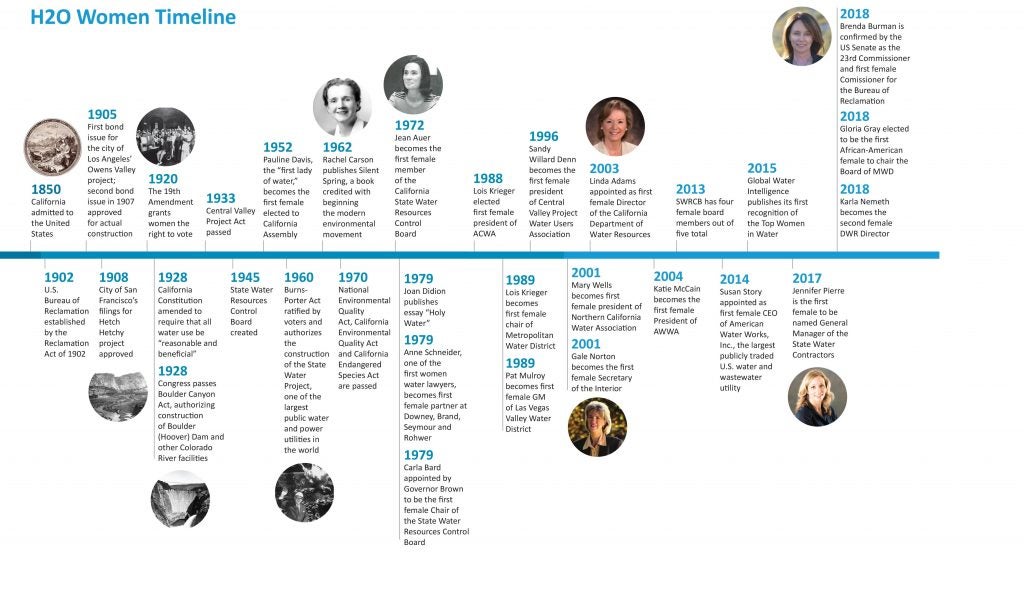A week before voters elected a record number of women into Congress, I found myself attending my first water conference without a single man in the room.
It was the 2018 California H2O Women Conference, and it was unlike any other women’s leadership event I have ever attended.
The focus wasn’t on mentoring, work-life balance or leaning in. Rather, the content was gender-agnostic, addressing the most timely water issues in California today, including Sustainable Groundwater Management Act-driven solutions, the business of water, water recycling and use, and technology and innovation.
The conference theme was adaptation and resilience, which are more relevant than ever as we struggle to address the impacts of climate change, most recently in the form of the worst wildfires in the state’s history. A critical element to creating an equitable and resilient water system involves including not only environmental perspectives, but also disadvantaged communities, farmers, tribes, and, of course, women.More women are working at all levels in the water sector. What this means for resilience: Share on X
What do women have to do with water?
Stats for women in the U.S. water sector don’t exist, although the role of women in the water sector in developing countries has been studied for two decades, with research finding improvements in governance, transparency and sustainability when women and men are equally involved.
Throughout my career, I’ve noticed that a majority of water meetings and conferences I attend are often dominated by older white males – people I have great respect for – but it’s been clear that there have been missing perspectives and areas of expertise.
That’s why the California H2O Conference organizers, Stephanie Hastings and Amy Steinfeld, both attorneys at Brownstein Hyatt Farber Schreck, sought to create a space for those missing perspectives to be included.
“For much of our own careers, women have been underrepresented in the industry,” Hastings wrote me in an email explaining how the conference came about. “Then, about five years ago, we noticed a significant change that inspired the idea for the conference.”
That change: more women working at all levels in the water sector, including appointed and elected leadership positions.
More women in top water positions
By 2015, the majority of associates in the California water group at Hasting’s firm were women. I’ve seen the same trend at EDF, where I’m often inspired by looking around the table and seeing so many female colleagues.
“We wanted to celebrate those successes and also to learn from the experiences of these leaders,” Hastings explained. “As a result, our conference is oriented around women in positions of leadership in the water space.” Those leaders include Brenda Burman, the conference keynote speaker, who this year was confirmed by the U.S. Senate as the 23rd commissioner and first female head of the Bureau of Reclamation since it was created in 1902.
Today, Burman oversees the largest wholesale provider of water in the country, serving more than 31 million people and one out of five western farmers. In the era of climate change, Burman also has been working to help finalize multi-state drought contingency plans to address record low water levels in Lake Mead, a major source of water for California, Nevada and Arizona.
I’m inspired by Burman and my other female water colleagues, and I recognize the importance of including diverse perspectives based not only on gender but also race, ethnicity and culture.
I hope – and fully expect – that by the time my 4-year-old daughter grows up, Congress, the water sector, and whatever field she chooses to work in includes even more women, and that the world is a more equitable and more resilient place as a result.











3 Comments
Good Article,…. Good Information….
https://waterexpo.biz/exhibitor-registration.php
Interesting commentary on a rapidly-evolving topic. My study based on a 2011 survey found water CEOs were overwhelmingly male (94%) but judging by my observations at industry conferences, I bet it’s changed significantly in the past few years.
(Executives were also 96% white; i suspect we’ve not seen as much progress on that front).
http://mannyteodoro.com/wp-content/uploads/2014/03/MTeodoro-TWhisenant-WUEL-Part-I-JAWWA2013.pdf
goood blog.